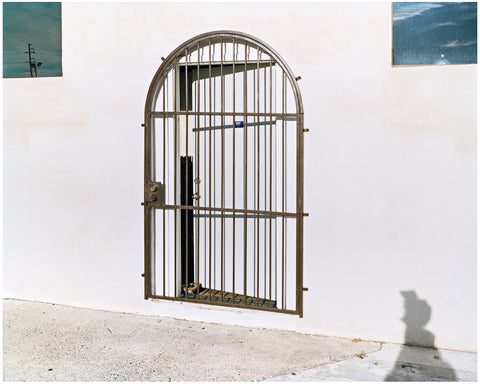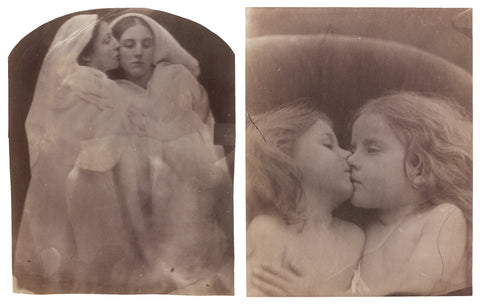
I arrived in Kentucky in February of 1976. I was twenty-five and recently out of college. I rented a small house on Ingram’s Creek, one of the most remote and beautiful hollers in Letcher County. I wanted to make a document of my new community that had the soul and rhythm of the place, but my camera seemed to get in the way. It saw mostly commonplaces; Appalachia was strange to my eye.
I wanted to get to know the people, and the one thing I could offer them was to teach their children to take pictures. I had taught photography to First Nations children during my summers in college, so after a month of settling in and meeting my neighbors, I decided again to teach students in the local elementary schools. I had heard that the principal of Cowan Elementary School, Mr. Gatton, might be receptive to my idea. I went to his office one day in March and left a message with the secretary. Within half an hour he had tracked me down and was ready to begin.
I taught in three schools. We built darkrooms at the two larger ones. At Cowan all that was available was the boiler room. The furnace was fired by coal and when it kicked on I had to yell to be heard over the roar. We ran hoses along the floor from the water tanks to mix chemicals and wash negatives, but sometimes they broke and the coal dust and water mixed together to leave a layer of gray sludge on the floor. We put our four new enlargers and chemicals in the janitor’s closet. Half of the students could print in the closet while the other half developed negatives in the boiler room.
The students bought ten-dollar Instamatic cameras from me; I hoped that by buying the cameras they would value them as things that had worked for and would have as long as they took care of them. If they didn’t have the money, they earned it by mowing lawns, or holding a bake sale or a raffle. I supplied the students with film and flash.
Like any artists, they were inspired sometimes more than others. They needed to have their cameras with them always and plenty of film, so that when they wanted to photograph something—a hog killing, a colt being born, a birthday party—they could. Picture taking became simply part of their lives, and especially of their play.

Kingdom Come was one of the last one-room schools in Kentucky. It survived consolidation because the buses couldn’t bring children down the road out of the holler to school. The road in a few spots was actually the creek. The school building was a white wooden house on the land that had been given to the county a hundred years ago by the Ison family.
Before the roads were built and cars were available, the school had maybe a hundred students. When I arrived there were only seventeen. Inside were two big rooms, the kitchen and schoolroom. Every morning during the cold months the students took turns bringing in coal from the coal pile next to the creek to fill the potbellied stove that heated the school. They studied together in small groups: Freddy Childers and Billy Dean Ison in the first grade and Shirley Couch in the second grade, Amy Cornett, Mary Joe Cornett and Tammy Williams in the third and fourth grades. The older children helped the younger ones. The first day, I gave out the Polaroid cameras and showed them how to set the distance, to push the shutter without shaking the camera, how to pull the film out and coat the picture. A student took one photograph while the rest of us watched to catch his mistakes.
Freddy Childers was by far the smallest kid in the school and the most energetic. He took his first picture of Billy Dean, who was at least a head taller. He didn’t understand that he had to change the angle of the camera in order to include what was above or below his eye level, so Billy Dean’s head was cut off.
The other students made fun of Freddy. I explained that only what was inside the white line painted in the viewfinder appeared in the photograph. He caught on, and the first time he took the camera home brought back two self-portraits: “Me and my brother Homer” and “Self-portrait with the picture of my biggest brother, Everett, who killed himself when he came back from Vietnam.” In his portrait Freddy holds a picture of Everett when he was a boy. Everett had been the favorite son. One day after he came home from Vietnam he put on his army uniform, turned on the radio, and shot himself through the heart. Homer is Freddy’s handicapped brother. His speech is slurred but Freddy understands him and takes care of him as if he were his little brother. He never thought to be ashamed of Homer.
Bonnie and Luke Capps are twins. They both loved to photograph their flaxen-haired half sisters playing in the mud or on their bikes in the afternoon. Mary Joe Cornett was a shy girl in the fourth grade who didn’t hesitate to direct her subjects with authority. The photographs of her family are carefully staged portraits at mealtime, in the barn or in front of old family portraits.
In the Autumn of 1977, I taught the fourth-grade class at Campbells Branch. I had been warned by their teacher that these children had the lowest IQs of any in the school. The first day, their teacher sent them to me lined up single-file. Billy Jean Ison, Robert Dean Smith, Maywood Campbell, Ruby Cornett and Greg Cornett. She had also warned me that they were rowdy, but I found them to be so well behaved that I wondered whether we could relax enough to work together. Once they took the cameras home and developed their first roll of film, they were so excited they forgot the rules of formal classroom behavior. Instead of taking their seats and waiting for instructions as they did in their regular classes, they began to work right away on their own. Some would help me set up—sweep the floor, clean the drying cabinet.
Ruby, Denise and sometimes Johnny Wilder mixed the developer, while the other students developed film or began printing. Now in order to get their attention I had to call a group meeting. They were independent and passionate workers.
Darlene Dixon, a teacher’s aide, watched over the darkroom, and I stayed outside to look at the contact sheets and prints. Every semester, after a conversation with each student about what they liked taking pictures of and what their problems were, I made suggestions about what they might try next. I noticed that Maywood Campbell’s pictures were always slightly disappointing to her. I looked at her negatives. She had chosen to photograph very intimate family moments, but her compositions were a bit off. In one photograph her little brother was riding on her grandfather’s shoulders. Their outstretched left arms were cut off. She had tried to center her compositions, so they fell apart when she didn’t succeed. I advised her to walk around and just look through the camera for a few days to become more aware of the edges of the frame.
I wanted to create a lively, open atmosphere in the classroom so there were materials for drawing, writing and making books, and there were always photography books. The pictures were starting points for all sorts of conversations.
Allen Shepherd and Robert Dean Smith picked up a book of photographs of World War II. We sat on the floor and I asked them to tell me what was happening in the pictures. When they looked at a photograph of Hitler, I asked if they knew who he was. “A baseball player,” Allen guessed. I told them what I knew about Hitler’s role in the war. Then we looked at the picture again. I suggested that what we know about the subject of a photograph changes our interpretation of it, but it should contain clues that point us in the right direction.
I also brought in books made by other children, some of them diaries published when their authors were adults—Opal is one begun by a country girl when she was five. It describes her fantasy world in the country. We took turns reading it out loud, and Billy Jean and Allen literally fell off their seats laughing about the “cathedral service” Opal held for her pig Aphrodite. Reading Opal’s stories gave them the idea that other children could enjoy their pictures just as much as they had Opal’s stories. Her diary encouraged some of them to write. Robert Dean kept a diary for a year. For the first month I could not read anything he had written. There were no spaces between the words and he’d spelled everything phonetically. When I deciphered it, I found that he had written beautiful passages about what he did each day, what his hounds had tracked or how the corn field looked in the afternoon.
Persuading them to see the eloquence of their rough photographs was more difficult. There were no books of children’s photographs to look at. They hadn’t seen anything like the photographs they were going to take in subject matter, tonal range or surface. The portraits they admired were the portraits of Hank Williams and Dolly Parton on their album covers and the landscape pictures of fields of flowers in the seed catalogues, but they were able to give each other encouragement. I guided everyone to tell us what they were trying to say with their pictures and the others to tell them what feelings the pictures evoked for them. In that way they could learn to communicate with each other. Later, when they had exhibitions in the school, in the town bank, at the University of Kentucky and finally in galleries in New York and Chicago, they could see the value of their photographs in other contexts.

As they became more comfortable with the camera, I wanted them to expand their ideas about picture making but to stay close to what they felt deeply. I asked them to photograph themselves, their families, their animals, their community, stories they could tell with pictures and finally their dreams or fantasies. When they made self-portraits they learned that they could be the subjects of their own photographs and create characters for themselves. The assignment to photograph their dreams brought into play their imaginary world. Before they began, in order to establish a receptive audience for their very personal and often frightening fantasies, we closed ourselves in the darkroom, sat on the floor and told each other our scariest dreams. The photographs they took afterward broke new ground for many of them. They saw they could produce whatever image they wanted. Scott Huff hadn’t had any luck with his pictures until then, but he strode into my room triumphant with his roll of dream pictures. He told me they would be good if he could develop them right. His hands trembled as he agitated the developing tank, but he had no problems, and a fine series of pictures—“A flying dream”—resulted. Allen Shepherd had a fight with his best friend, Ricky Dixon. He and Ricky had swapped knives and Allen felt he’d been short changed. They weren’t speaking to each other until one night Allen had a dream that he’d killed Ricky. He decided to make a photograph of Ricky dead in the forks of a tree. He asked Ricky to pose for him, and during the making of the photograph the two boys made up.
Others didn’t need such urging to experiment. Denise Dixon and Russell Akeman loved to take pictures. Russell lived with his grandmother, brother and sister. He wanted to be a photographer and was encouraged that there was a famous photographer named Russell Lee. Russell’s subject matter was limited to himself, his animals and family, but his enthusiasm led him to an understanding of photography beyond most of the other students. His grandmother’s farm sits below the road in a little holler of its own. There are lots of animals around—chickens, ducks, a horse, cows and pigs. It is an old-time farm that still looks like it was carved out of a wilderness. It has been kept with such care for generations that the way the fields are laid out, where the lawn ornaments are placed and how the outbuildings have been mended are all part of the nature that surrounds the neat white wooden house. The compositions of Russell’s photographs sometimes mirror the natural balance and playfulness of the landscape of his grandmother’s little holler.
You can see in Denise’s photographs that she was a beautiful ten-year-old. She was the best dressed and most ladylike of the girls in her class. With the first roll of film she took I noticed that she had a distinctive and original sense of composition, and she never ran out of ideas as some of the others did. I visited her at home several times. She had set up her room as an oversized doll house with stark white walls and a few posters of animals and family portraits. She created tableaux with her dolls on the bureau, night table and bed, and likewise in her photographs she made up fantasies involving her twin brothers, Phillip and Jamie. Her careful arrangement of her room and her dress was similar to the care she took in the composition of her photographs. When I asked her to document her Thanksgiving dinner, she took a picture of the turkey on a plate on the bare formica table. As with her room she included only what was essential.
Denise worked with me from the fourth through the sixth grade. In the seventh grade she became a cheerleader and basketball player. She wore makeup and flirted with the boys in the eighth grade. She took fewer pictures and finally told me she wanted to quit photography class. She had lost her interest but couldn’t explain why.
Russell started taking pictures when he was in the fourth grade and didn’t stop until the summer after the seventh grade. He grew a lot during the summer and his voice changed. I taught him how to use a 21⁄4 twin lens reflex camera to try to renew his interest, but he began skipping photography class. He would say “I’ll come in a minute” and never show up, or if I went to his room to look for one of his classmates he would avoid my gaze. I suspect he didn’t like the attention, which earlier he had sought, that he got from me or from his pictures. His ambition to be a photographer I think seemed childish to him now. He knew it was more likely that he would be a coal miner. I had fallen in love with Russell and Denise during those years. They were my companions. Once Denise and I stretched out on her bed and talked for hours about her dreams and premonitions. Russell and I photographed together at his grandmother’s house. A couple of times I held my breath as I watched him climb to the roof of the barn to take a picture with my Hasselblad. We were like accomplices in a secret game.

We knew as photographers that we sometimes had to trick the adults into letting us take the pictures we wanted. It may have been love that propelled them to photograph in relationship to other forms of love in their lives, but when they reached puberty they grew up. They became mountain men and women with the limitations and security of their society. Amy Cornett quit school and married Billy Caudill. Robert Dean Smith became a coal miner and Bonnie Capps, who wanted to be a lawyer, was a waitress at the Pizza Hut.
I couldn’t push Denise or Russell to continue. I realized I was trying to hold on to a period of their lives that they had let go of. Their eloquence with the camera was a passage of childhood. They would have to become conscious of their natural abilities and become photographers if they were to go beyond the point they had reached. The pictures were in their family albums or pasted on the wall, mixed in with the pictures taken by their parents or by the studio photographer at the dime store. Junior Childers came by the other week with his new wife to show her the darkroom and tell her about the time they used to take pictures.
'I arrived in Kentucky in February of 1976' by Wendy Ewald, from 'Portraits and Dreams' by Wendy Ewald, published in August 2020.






